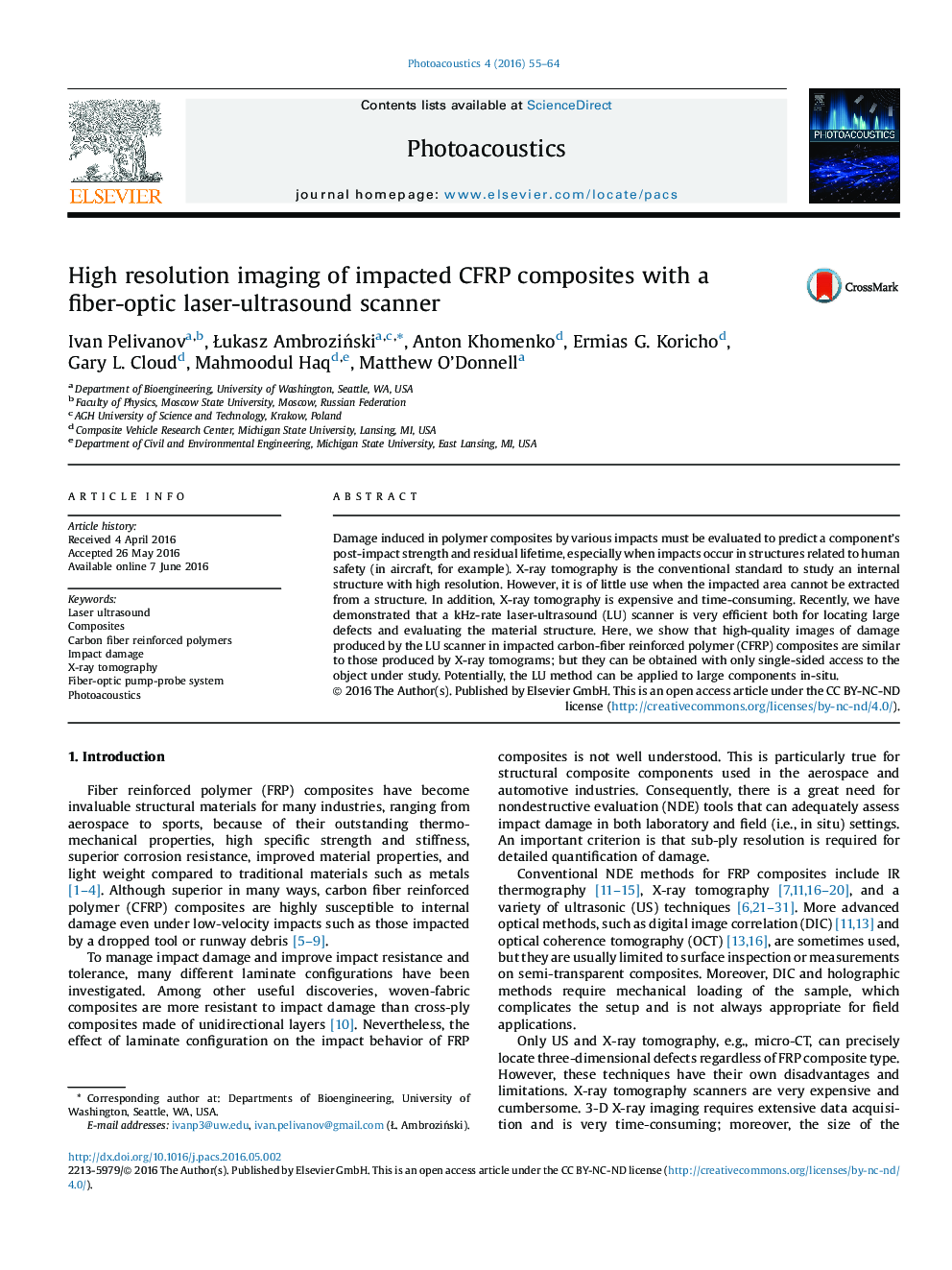| Article ID | Journal | Published Year | Pages | File Type |
|---|---|---|---|---|
| 4977315 | Photoacoustics | 2016 | 10 Pages |
Damage induced in polymer composites by various impacts must be evaluated to predict a component's post-impact strength and residual lifetime, especially when impacts occur in structures related to human safety (in aircraft, for example). X-ray tomography is the conventional standard to study an internal structure with high resolution. However, it is of little use when the impacted area cannot be extracted from a structure. In addition, X-ray tomography is expensive and time-consuming. Recently, we have demonstrated that a kHz-rate laser-ultrasound (LU) scanner is very efficient both for locating large defects and evaluating the material structure. Here, we show that high-quality images of damage produced by the LU scanner in impacted carbon-fiber reinforced polymer (CFRP) composites are similar to those produced by X-ray tomograms; but they can be obtained with only single-sided access to the object under study. Potentially, the LU method can be applied to large components in-situ.
